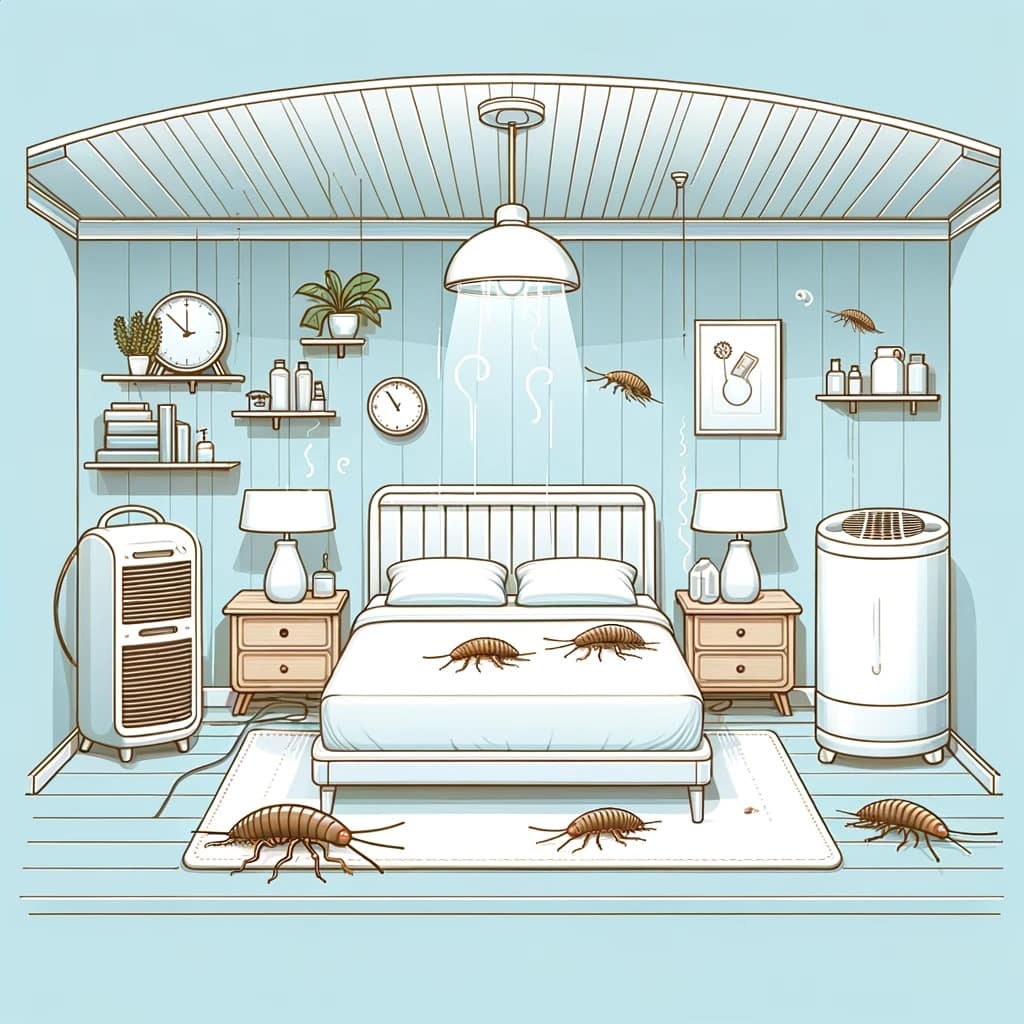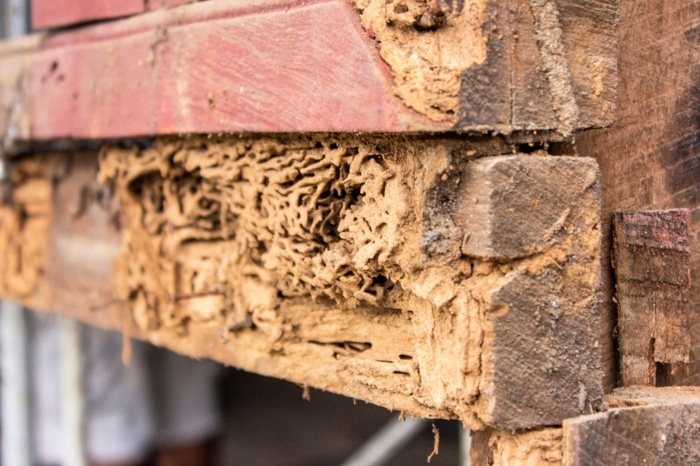Earwigs, with their unsettling pincers and nocturnal habits, are often unwelcome guests in any home, especially in the sanctity of our bedrooms. The mere thought of these insects sharing our sleeping space can cause discomfort and worry. A common and rather disturbing question that often arises is, “Do earwigs go in your ear when you sleep?” This guide aims to dispel myths, understand why these pests invade our private spaces, and explore effective strategies to keep them at bay, ensuring peaceful, earwig-free nights.
Don’t let pests take over your home! Act now and schedule a professional pest control service to get rid of unwanted guests.
Understanding Earwigs
Earwigs, scientifically known as Dermaptera, are small to medium-sized insects recognizable by their characteristic pincers or forceps at their abdomen’s end. Contrary to popular belief, these pincers are more a tool for defence and mating rituals than a weapon against humans. Earwigs are nocturnal creatures, preferring dark, damp environments, which often leads them into human dwellings in search of such conditions.
One of the most enduring myths about earwigs is that they crawl into human ears to lay eggs. This notion is purely a myth and has no scientific backing. Earwigs do not have any inclination to burrow into human ears or any other part of the body. Their search for darkness and moisture may occasionally lead them into contact with humans, but this is not their intended goal. Understanding this fact is crucial in addressing the fear and disgust they often evoke.
Earwigs in My Bed: Identifying the Problem
Finding earwigs in your bed is an experience that can alarm even the most stoic individuals. If you’ve encountered these insects in your sleeping area, it’s essential to recognize the signs of their presence. Earwigs are nocturnal, so the most common time to spot them is during the night or in the early morning. You might see them scurrying away when you move your bedding or notice their small, dark bodies against light-coloured sheets.
Despite their frightening appearance, earwigs are not directly harmful to humans. They do not spread diseases nor bite or sting under normal circumstances. However, their presence in your bed can indicate a larger issue within your home environment, such as excessive moisture or easy entry points for pests.
Common misconceptions about earwigs’ presence in beds revolve around the idea that they are attracted to human flesh or warmth. In reality, earwigs are more likely to be found in beds because of the ideal conditions these locations provide, such as darkness during the day and potential access to moisture. It’s not the bed itself that attracts them but the conditions associated with it.
Why Are There Earwigs in My Bed?
The presence of earwigs in your bed can be puzzling and distressing. Understanding why they are drawn to this space is key to preventing their unwelcome visits. Earwigs are attracted to environments that meet their basic needs for shelter, moisture, and food. Your bedroom, particularly the bed area, can inadvertently provide these conditions.
Moisture is a significant factor in attracting earwigs. These insects thrive in damp conditions, and any form of humidity in your bedroom can be an open invitation. This moisture can come from various sources – a humidifier in the room, damp laundry left out, or even perspiration and breath moisture that accumulates during the night. Earwigs are also attracted to the dark, secluded spaces that beds and bedrooms offer. The area under the mattress, within the bed frame, or even piles of clothing can provide the perfect hideout for these pests.
Another aspect to consider is the availability of food sources. While earwigs primarily feed on a variety of dead and living plant material, they are also known to consume other insects. If your bedroom has a pre-existing issue with other small pests, earwigs might venture in, lured by the promise of an easy meal.
Identifying and addressing these attractants is crucial in deterring earwigs from choosing your bed as their habitat. Simple steps like maintaining a dry, clean, and clutter-free bedroom environment can go a long way in making your space less appealing to these insects.
What Brings Earwigs Into the House
To effectively manage earwig infestations, it’s essential to understand what brings them into your home in the first place. Earwigs are versatile creatures and can find their way inside through various means. They typically enter homes in search of shelter, especially during extremes of weather such as prolonged dry spells or heavy rains.
Common entry points for earwigs include gaps under doors, cracks in the foundation, and openings around windows. Once inside, they are drawn to areas that provide their ideal living conditions – primarily moist, dark spaces. Basements, bathrooms, and kitchens are frequent hotspots, but as we’ve seen, bedrooms can also provide the perfect habitat for these pests.
Additionally, everyday household activities can inadvertently create an inviting environment for earwigs. Overwatering indoor plants, poor ventilation leading to damp conditions, and even the accumulation of organic debris in drains can attract these pests. Regular home maintenance, like sealing cracks and ensuring good air circulation, can significantly reduce the likelihood of earwigs making themselves at home in your space.

Check out our post about Pest Control Preventive Maintenance.
Earwig on Bed: Immediate Response
Discovering an earwig on your bed requires immediate action. The first step is to remove the earwig from your bed. This can be done using a piece of paper or a container to gently capture and release the insect outside. Avoid killing the earwig, as this can attract more insects to the area.
Once the immediate threat is dealt with, it’s essential to take steps to prevent earwigs from returning. Start by stripping your bed and washing all bedding in hot water. This will eliminate any earwigs or eggs that might be present. Vacuuming around and under the bed can also help remove any hidden insects and eggs.
Inspect your bedroom for potential entry points and attractions for earwigs. Look for cracks in walls, loose window frames, and gaps under doors. Sealing these can prevent earwigs from entering. Additionally, reduce moisture in your bedroom by using dehumidifiers and ensuring proper ventilation. If you have indoor plants, ensure they are not overwatered, as the damp soil can attract earwigs.
In some cases, you may need to use insecticides as a short-term solution. Choose products that are specifically designed for indoor use and safe around sleeping areas. However, remember that chemical treatments are only a temporary fix and should be used in conjunction with long-term prevention strategies.
Long-Term Strategies for Earwig Control
For sustainable earwig control, it’s crucial to adopt a comprehensive approach. Integrated Pest Management (IPM) is a practical and environmentally sensitive method. This approach involves a combination of common-sense practices, focusing on long-term prevention of pests and their damage.
Maintaining Cleanliness:
Regular cleaning reduces the likelihood of earwig infestations. This involves routine dusting, vacuuming, and decluttering, especially in areas that are prone to dampness and darkness. Removing piles of newspapers, boxes, and other clutter can deprive earwigs of their preferred hiding spots.
Moisture Control:
Since earwigs thrive in moist environments, controlling moisture levels in your home is vital. Fix any leaking pipes, ensure good drainage around your home, and use dehumidifiers in damp areas like basements. Proper ventilation in kitchens, bathrooms, and other humid areas is also crucial.
Outdoor Maintenance:
Earwigs often enter homes from outdoor areas. Regularly maintaining your garden, such as by trimming overgrown vegetation and clearing debris, can reduce earwig populations. Consider adjusting your landscaping to create a dry border around your home, as this can act as a deterrent.
Professional Solutions and Assistance
When DIY methods fall short or if the infestation is severe, it’s time to call in the professionals. Pest control services, like those offered by Pest Share, specialise in effectively handling earwig infestations. These professionals can provide targeted treatments, identify and seal entry points, and offer customised advice for keeping your home earwig-free.
Pest Share’s discreet and efficient services ensure that your earwig problem is handled with minimal disruption to your daily life. Their expertise can be particularly beneficial in identifying hidden issues contributing to the problem and implementing long-term solutions that DIY efforts might miss.
Prevention: Keeping Earwigs Out of Your Bedroom
Preventative measures are your best defense against future earwig invasions. Regular inspections of your home can help identify potential issues before they escalate. Pay special attention to areas that are likely entry points or ideal habitats for earwigs.
Natural repellents can also be effective in deterring earwigs. Certain herbs and essential oils, like lavender and peppermint, are known to repel earwigs and can be used in and around your bedroom. However, remember that these should be part of a broader prevention strategy rather than standalone solutions.
Conclusion
Dealing with earwigs in your bedroom can be unsettling, but with the right knowledge and strategies, it’s a manageable problem. From understanding why they invade your space to implementing long-term control measures, you can create an environment that’s less inviting to these pests. Remember, maintaining cleanliness, controlling moisture, and regular home maintenance are key to preventing earwig infestations. And for those times when the situation is beyond your control, Pest Share is just a call away, ready to assist with effective and professional solutions. Keep your bedroom a sanctuary, free from unwanted bedfellows.





